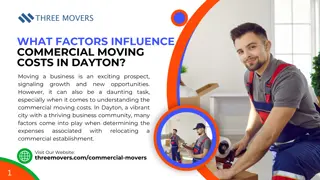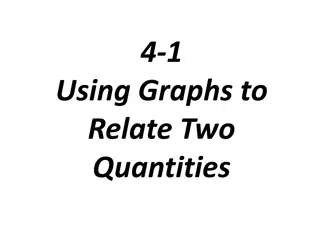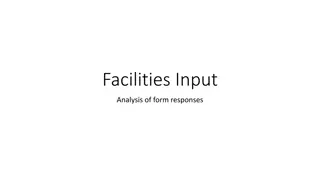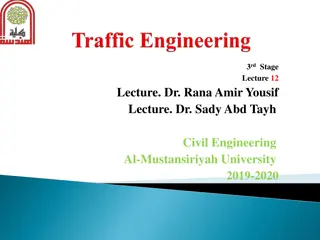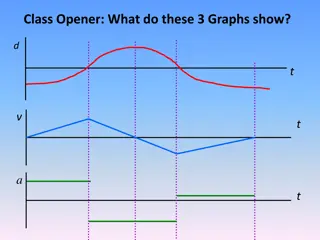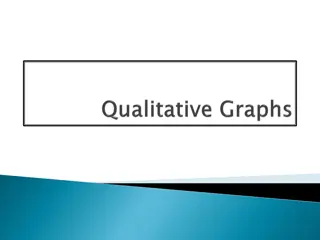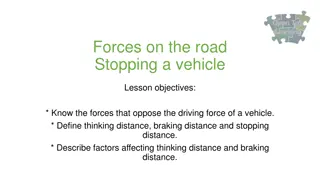Exploring Moving Walkways with Distance-Time Graphs
In this unit on moving walkways, we analyze a Distance-Time graph comparing walking on a moving walkway to walking on the ground beside it. We explore mathematical techniques to understand the dynamics of different walking scenarios and learn how to represent a person standing still on the moving walkway in the graph.
Download Presentation

Please find below an Image/Link to download the presentation.
The content on the website is provided AS IS for your information and personal use only. It may not be sold, licensed, or shared on other websites without obtaining consent from the author. Download presentation by click this link. If you encounter any issues during the download, it is possible that the publisher has removed the file from their server.
E N D
Presentation Transcript
Mathematics Unit 49: Moving Walkways What do we want to find out? What do we want to find out? QUESTION 49.1 On the right is a photograph of moving walkways. What useful information do we know? What useful information do we know? The following Distance-Time graph shows a comparison between walking on the moving walkway and walking on the ground next to the moving walkway. What other mathematical techniques do we need to apply? What other mathematical techniques do we need to apply? What have we learned? What have we learned? Assuming that, in the above graph, the walking pace is about the same for both persons, add a line to the graph that would represent the distance versus time for a person who is standing still on the moving walkway.
Mathematics Unit 49: Moving Walkways What do we want to find out? QUESTION 49.1 On the right is a photograph of moving walkways. What useful information do we know? What useful information do we know? The following Distance-Time graph shows a comparison between walking on the moving walkway and walking on the ground next to the moving walkway. What other mathematical techniques do we need to apply? What other mathematical techniques do we need to apply? What have we learned? What have we learned? Assuming that, in the above graph, the walking pace is about the same for both persons, add a line to the graph that would represent the distance versus time for a person who is standing still on the moving walkway. Back to start Back to start
Mathematics Unit 49: Moving Walkways What do we want to find out? What do we want to find out? QUESTION 49.1 On the right is a photograph of moving walkways. What useful information do we know? The following Distance-Time graph shows a comparison between walking on the moving walkway and walking on the ground next to the moving walkway. What other mathematical techniques do we need to apply? What other mathematical techniques do we need to apply? What have we learned? What have we learned? Assuming that, in the above graph, the walking pace is about the same for both persons, add a line to the graph that would represent the distance versus time for a person who is standing still on the moving walkway. Back to start Back to start
Mathematics Unit 49: Moving Walkways What do we want to find out? What do we want to find out? QUESTION 49.1 On the right is a photograph of moving walkways. What useful information do we know? What useful information do we know? The following Distance-Time graph shows a comparison between walking on the moving walkway and walking on the ground next to the moving walkway. What other mathematical techniques do we need to apply? What have we learned? What have we learned? Assuming that, in the above graph, the walking pace is about the same for both persons, add a line to the graph that would represent the distance versus time for a person who is standing still on the moving walkway. Back to start Back to start
Mathematics Unit 49: Moving Walkways What do we want to find out? What do we want to find out? QUESTION 49.1 On the right is a photograph of moving walkways. What useful information do we know? What useful information do we know? The following Distance-Time graph shows a comparison between walking on the moving walkway and walking on the ground next to the moving walkway. What other mathematical techniques do we need to apply? What other mathematical techniques do we need to apply? What have we learned? Assuming that, in the above graph, the walking pace is about the same for both persons, add a line to the graph that would represent the distance versus time for a person who is standing still on the moving walkway. Back to start Back to start



